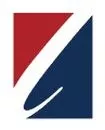The B.C. and federal government have announced new benefits for workers impacted by COVID-19.
B.C. Emergency Benefit for Workers
The B.C. Emergency Benefit for Workers will provide a one-time $1,000 payment to people who lost income because of COVID-19. B.C. residents who receive Employment Insurance (“EI”) or the new Canada Emergency Response Benefit (“CERB”, described below) will be eligible. While few details have been released, applications open soon and the payment will be made in May.
Canada Emergency Response Benefit
As part of its COVID-19 Economic Response Plan, the federal government has announced a variety of supports to help workers facing hardship as a result of the COVID-19 outbreak, including the CERB. The CERB replaces the previously announced Emergency Care Benefit and the Emergency Support Benefit. The government has said CERB will provide $2,000 a month for up to 16 weeks for workers who lose their income as a result of the COVID-19 pandemic. The CERB would be paid every four weeks and be available from March 15, 2020 until October 3, 2020.
Who is covered?
Eligibility for the CERB is broadly defined. It applies to workers who have stopped working for reasons related to COVID-19 for at least 14 consecutive days within the four-week period during which they applied for the benefits. To qualify, workers must have had $5,000 in employment income, self-employment income, or maternity or parental leave benefits for 2019 or in the 12-month period preceding the application. They must also not have received any income during the consecutive days in which they have stopped working, subject to future regulations. If workers leave their employment voluntarily, they will not be eligible for the CERB.
“Reasons related to COVID-19” is not defined in the legislation, but the federal news release provides that it would include:
- workers who have lost their job, are sick, quarantined, or taking care of someone who is sick with COVID-19;
- working parents who must stay home without pay because of school and daycare closures; and
- workers who are still employed, but are not receiving income because of disruptions to their work situation due to COVID-19.
What about Employment Insurance?
Workers who are already receiving EI regular and sickness benefits as of today would continue to receive their benefits and should not apply to the CERB.
At this time, it is unclear whether those who have applied for EI regular and sickness but have not had their application processed will be automatically rolled over to the CERB. Those who are eligible for EI benefits would still be able to access their normal EI benefits, if still unemployed, after the end of the 16-week period covered by the CERB.
The government was unprepared for the deluge of Employment Insurance (EI) applications. As a result, the CERB is intended to be more accessible and streamlined than EI. For many employees, the CERB provides a lesser benefit than EI. The CERB provides a flat $2000 per month, while EI is a maximum of 55% of an employee’s regular earnings up to a maximum salary of $54,200.
Further, the government has not yet clarified whether the CERB can be topped up with a Supplemental Unemployment Benefit Plan (“SUB Plans”). SUB Plans permit an employer to top up an employee’s EI benefits to a maximum of 95% of their regular earnings. As of now, it seems as though employees would not be able to access their employer’s SUB Plan until the employees’ four-month period to receive the CERB has expired.
The COVID-19 situation is changing rapidly. In particular, we expect to be able to provide further information on the federal government’s proposed 75% wage subsidy after Monday when more details are to be released.
The content of this article is intended to provide a general guide to the subject matter. Specialist advice should be sought about your specific circumstances.
We operate a free-to-view policy, asking only that you register in order to read all of our content. Please login or register to view the rest of this article.




